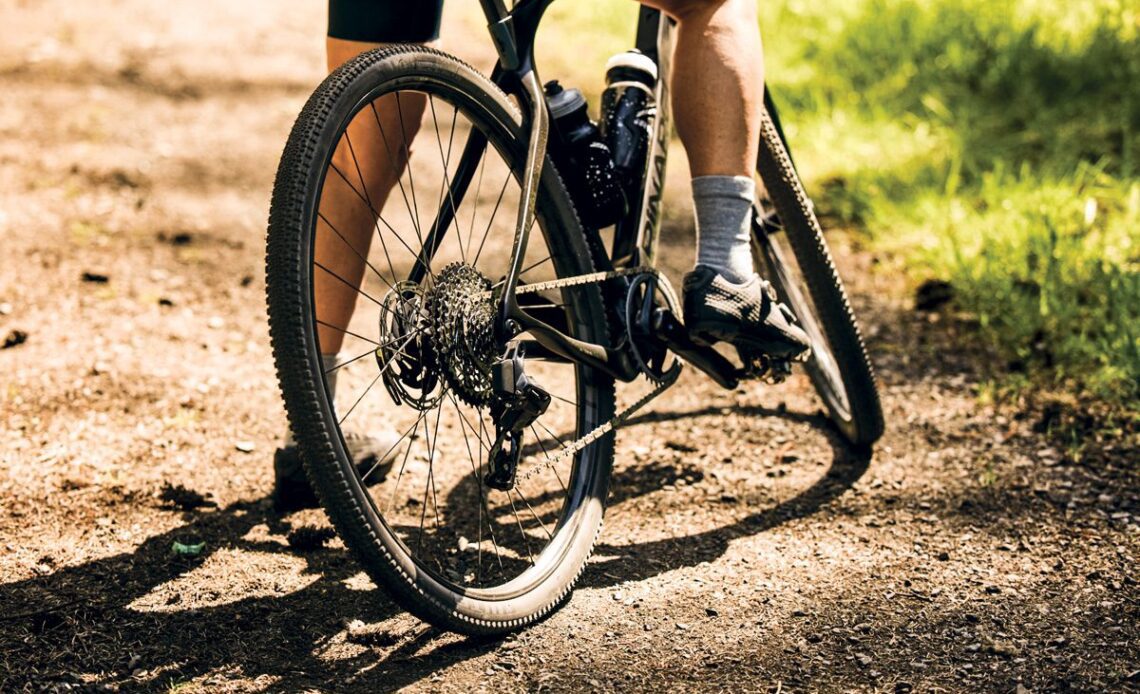What gearing setup do you need for your bike? Since it’s common to see 1-by setups on mountain bikes and two chainrings on road bikes, you might think the bicycle’s style decides the cassette and crankset. Brad Menna, product manager for road drivetrains at SRAM, says the cycling discipline doesn’t always dictate gearing.
“I love to use the example of Paris-Roubaix,” Menna says, “because it’s a very flat race. You will literally never shift the front derailleur.” Menna remembers how riders used to need two chainrings. They’d run a large smaller ring because they didn’t have a very wide range in their cassettes. The small ring helped them to grind it out on the cobbles. Today, with SRAM’s wide-range cassettes—12-speeds from 10–26 to 10–36 tooth configurations—pros can run a 1-by setup at Roubaix easily. “The Trek-Segafredo women’s team rode mostly 50- and 48-tooth chainrings. Riders like Mads Pedersen ride a 54.”
You don’t need the legs of a pro roadie to get the benefits of a 1-by setup on the road. “SRAM’s based in Chicago. I ride nothing but 1-by. I can do every single bike race within 100 miles of here because it’s so flat,” Menna says. So it’s not a matter of what type of bike you’re using when it comes to finding the best drivetrain for you. It starts with what terrain you’re going to be riding, followed by your level of fitness.
When you are deciding on a cassette, terrain and the type of pedalling you do on that terrain are key. Take a cross country course. You go up, down, over a feature and then up again. There are many quick changes on the route, so a cassette with a wide range—such as the XX1 Eagle’s 10–50 tooth arrangement—lets you find the gearing for whatever the trail is throwing at you. On the road, the changes are more subtle. Getting the right pedalling cadence is important, especially at higher speeds. On SRAM’s road cassettes, you’ll notice the small cogs increase in size by one-tooth increments: 10, 11, 12, 13, 14 and 15 for the high end of the Rival’s 10–30 tooth cluster. This arrangement allows you to find the right amount of spin in your pedals on a fast group ride. Once you get to a climb, and the group blows apart, you can get into your own rhythm on the 17, 19, 21, 24, 27 or 30 sprocket because it’s a lot easier to adjust your cadence when you are riding more slowly. Things get trickier when you face a gravel race with long, flat, fast sections mixed…
Click Here to Read the Full Original Article at Canadian Cycling Magazine…

